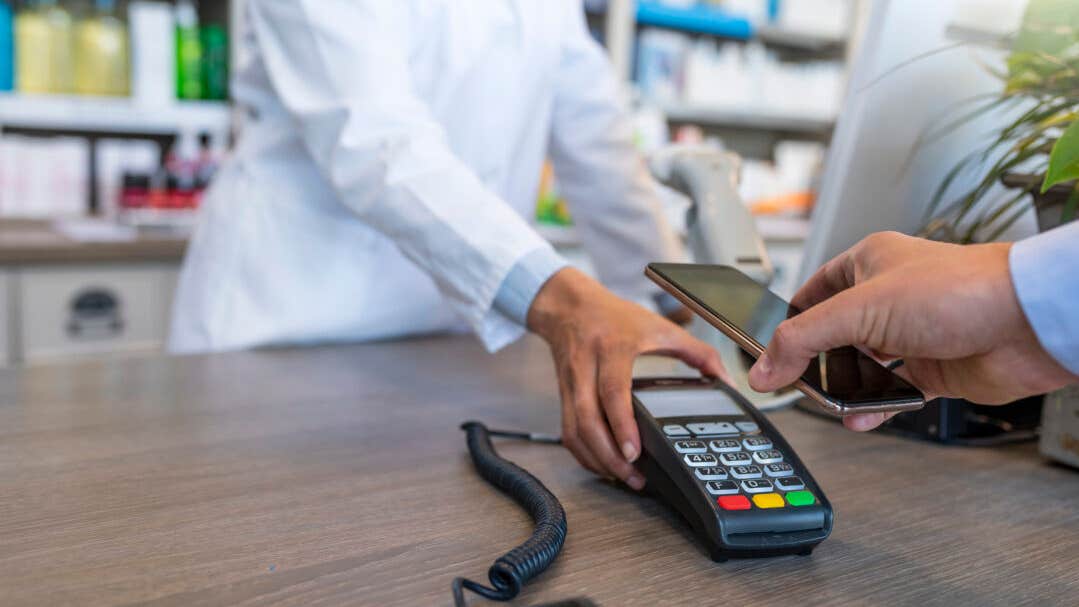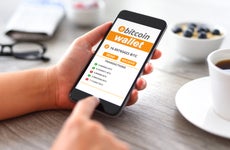Digital wallets: A beginner’s guide to how they work

The Bankrate promise
At Bankrate we strive to help you make smarter financial decisions. While we adhere to strict , this post may contain references to products from our partners. Here's an explanation for .
Digital wallets have become increasingly popular over the years — Apple released a digital-first credit card, “just Venmo me” has become a common phrase and you can even ride mass transit by simply holding your watch or phone up to the turnstile.
As of 2022, 89 percent of Americans have used at least one form of digital payment, and over two-thirds expect to have a digital wallet within two years, according to a study by McKinsey & Company.
For those still uncertain about using digital wallets for payments, here’s everything you need to know about what they are, how they work and why they’re a safe option
What is a digital wallet?
Digital wallets are a way to pay from financial accounts via computer, smartphone or a smart device. They ultimately eliminate much of the need to carry around an actual wallet.
Apple Pay, Google Pay, and Samsung Pay are probably three of the most popular digital wallets, but there are quite a few others. Some other popular digital wallets include PayPal and Venmo, both of which are uniquely social by allowing you to easily send money to retailers and friends.
Zelle is another popular option for digital payments that automatically comes with many bank accounts.
How digital wallets work
To get started with a digital wallet, first decide which one you want to use. This decision will likely correlate with the mobile operating system you use — Apple Pay for iPhone users, Google Pay for Android users and so on.
You can also choose to use one or multiple. Different digital wallets might be better for different purposes. For example, you could have:
- Apple Pay as a backup payment method if you forget a physical wallet
- Venmo to split bills with friends and family
- PayPal for a quick, easy and secure checkout from retailers that accept it.
If you want to utilize a digital wallet, you’ll need to enter your card information into the app or site of your choice. Your information will then be encrypted and you will only be able to use the wallet when you unlock your device and authorize the wallet’s use.
To make a mobile payment, you simply have to authorize the digital wallet and hold it close enough to the card reader so that your information can be transmitted. Not all retailers accept mobile payments. Look for the contactless payment indicator on the retailer’s point-of-sale system or card reader. The symbol looks like a sideways Wi-Fi icon.
When it comes to certain peer-to-peer payment apps, like Venmo or Zelle, you often can only send money to those who have an account with the same app.
What else can digital wallets do?
Not only are digital wallets great for simplifying payments, they are also a great place to keep other important documents organized and easily accessible.
Here’s what you can store in a digital wallet:
- Credit or debit cards
- Boarding passes
- Hotel reservations
- Concert tickets
- Gift cards
- Coupons
- Loyalty rewards cards
Many apps also offer their own digital wallets — particularly fast-food chains that also offer loyalty programs. Starbucks, for example, incentivizes customers to use the app by rewarding them with “stars” that can be redeemed for free drinks and other rewards. Starbuck gift cards can be uploaded and also reloaded with a debit or credit card.
Are digital wallets safe?
A common hesitation with digital wallets is the concern over safety and security. What happens if your phone gets stolen? Can hackers easily steal your information? Will you be putting your finances at risk?
The answer is no. Digital wallets are actually more secure than physical cards, because mobile payments are heavily encrypted and tokenized, meaning that none of your actual card or account numbers are stored within the digital wallet.
But how does that work?
When you add your personal information into a digital wallet, that data is then converted into a unique code via encryption that can only be accessed by authorized entities.
Digital wallets go a step further by also adding in tokenization, which takes that sensitive encrypted data and replaces it with a non-sensitive digital equivalent known as a token. These unique tokens are randomly generated every time a user makes a payment and only the merchant’s payment gateway can match this token to accept the payment.
Ultimately, your information is useless and unreadable to fraudsters when encryption and tokenization are used together. Even if a particular retailer you shopped at is hacked, your personal payment information is still protected, due to the multiple layers of protection.
Contactless, digital payments are generally safer than paying using a physical card’s chip or magnetic stripe, not only because of the tokenization technology, but also because of the requirement for authentication. If someone steals your card, it’s much easier for them to use it — but with a digital wallet, there are often added layers of security, whether it’s a fingerprint scan, facial recognition or password protection.
Pros and cons of digital wallets
Pros:
- Convenience: It’s more convenient to carry around and frees up pocket space, since it’s accessible from your device. Plus, you can store multiple types of cards in the digital wallet.
- Extra backup: You can still make payments at most retailers if you forget your wallet.
- Safety: Digital payments have the added protection of data encryption and tokenization, making them safer in many ways than traditional debit or credit card transactions.
Cons:
- Some limits on where you can use it: Not every retailer or person you want to send money to accepts payments from digital wallets, or may not have the technology in place yet to do so.
- It relies on your device: If the device your digital wallet is stored on runs out of battery, or you lose access to it for whatever reason, that means also losing access to the digital wallet.
How do digital wallets differ from crypto wallets?
While digital wallets are basically an electronic version of what you’d carry around in an actual wallet, crypto wallets are different: They store the keys needed to buy and sell cryptocurrencies. The main point of using a digital wallet is to pay for everyday items. Cryptocurrency holders typically use a crypto wallet to buy crypto.
However, mobile and crypto wallets do have some things in common. Like mobile wallets, you could pay for goods or services using a crypto wallet at places that accept cryptocurrency. And both wallets are far more secure than carrying around a credit card.
However, all the info required for either type of wallet is online and therefore vulnerable to hacking at some level. Cards and accounts in a digital wallet are typically FDIC-insured or have some level of fraud protection through the financial institution, while cryptocurrency is still largely unregulated.
Bottom line
Digital wallets offer consumers a convenient, efficient and secure method for virtual payments, tickets, gift cards and more. While it may not be time to ditch your physical wallet just yet, we will likely continue to see an increase in adoption by U.S. consumers and merchants as consumers become more comfortable with contactless and digital financial services.
Related Articles



